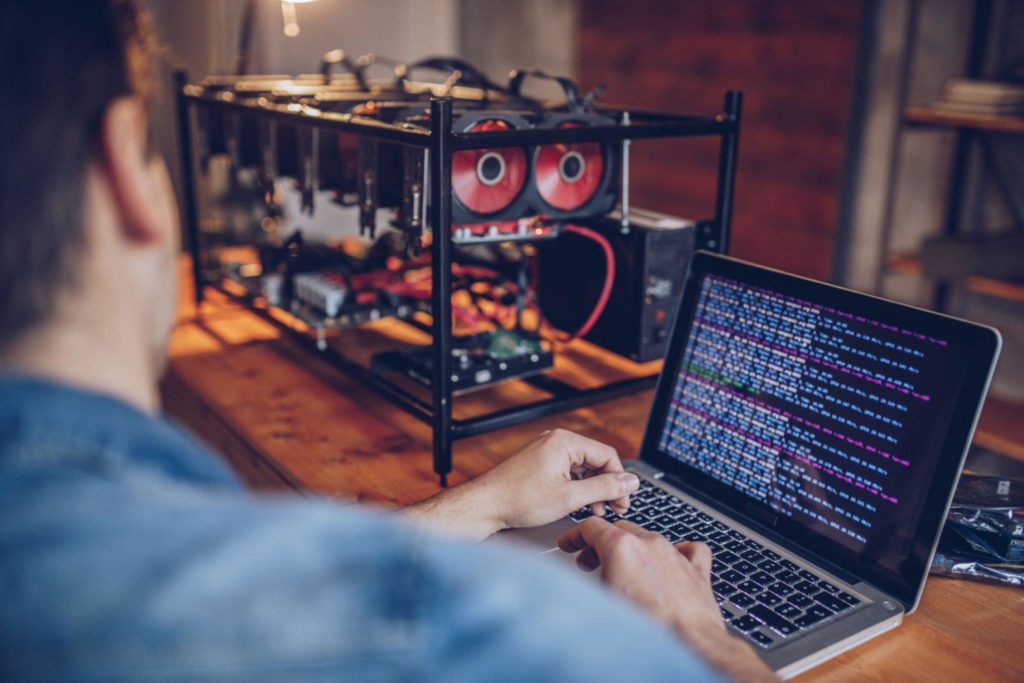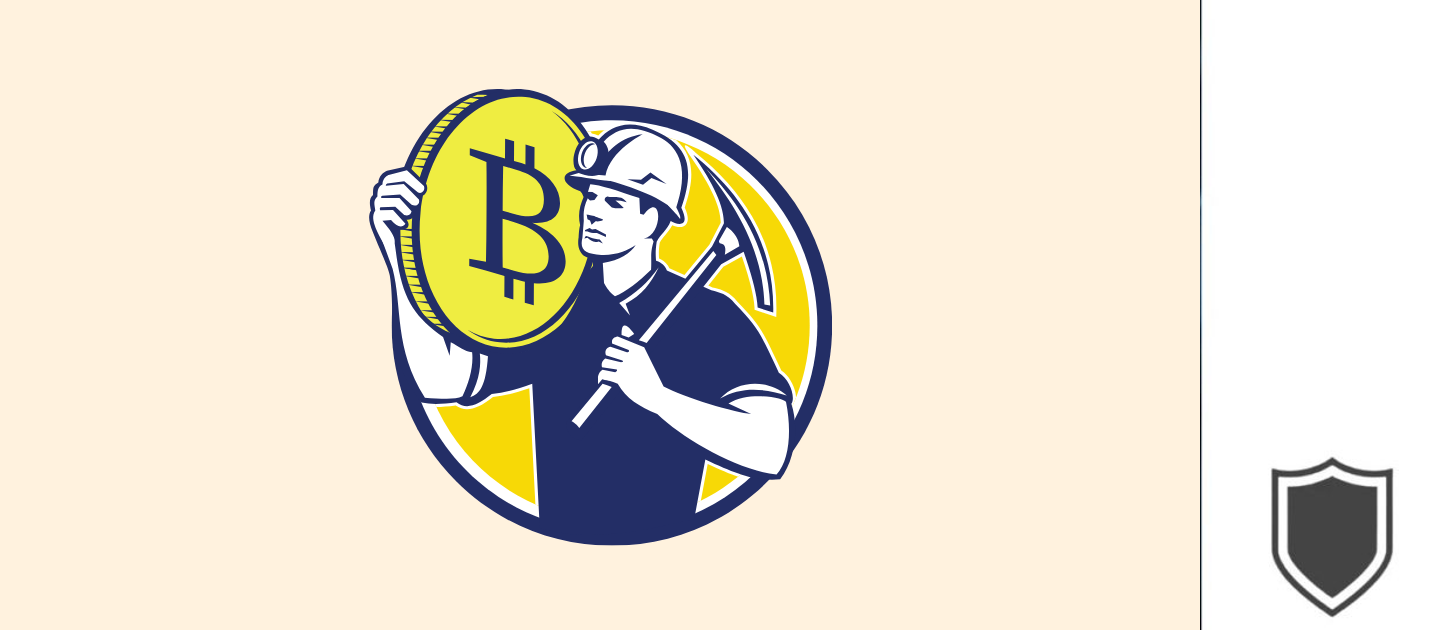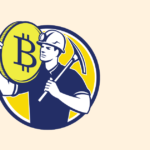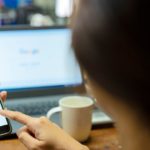If you’re interested in Bitcoin mining, it’s vital to choose the right hardware and software to maximize your profits. The process of Bitcoin mining requires the confirmation of transactions on the blockchain and adding them to the public ledger. In return for this service, miners are rewarded with newly minted Bitcoins.
My favorite Bitcoin miner is the Bitmain AntMiner S19 Pro. It is one of the most powerful and efficient Bitcoin miners on the market, with a hash rate of 110 Th/s and a power efficiency of 34.5 J/TH. It is also relatively quiet, making it a good choice for home mining.
Choosing the right mining hardware is crucial to the success of your mining operation. You’ll need to consider factors such as hash rate, power consumption, and cost when selecting a mining rig. Additionally, you’ll need to choose the right mining software to optimize your mining performance and ensure that your hardware is running at maximum efficiency.
Key Takeaways
- Choosing the right mining hardware is crucial to the success of your mining operation.
- You’ll need to choose the right mining software to optimize your mining performance and ensure that your hardware is running at maximum efficiency.
- Cloud mining may be a more convenient option for some miners, but hardware mining can be more profitable in the long run.
Table of Contents
Understanding Bitcoin Mining
Bitcoin mining is like finding gold in a river. But instead of panning for gold, miners use powerful computers to solve complex math problems. The first miner to solve a problem gets to add a new block of transactions to the Bitcoin blockchain and earn a reward in Bitcoin.
The math problems that miners solve are called “hashes.” A hash is a unique code that is generated for every transaction. Miners compete to solve hashes quickly, because the first miner to solve a hash gets to add the next block to the blockchain and earn the reward.
Bitcoin mining is difficult and expensive. Miners need to invest in powerful computers and pay for a lot of electricity. But it can also be very profitable. In fact, some miners make millions of dollars each year.
Here is a simple analogy to help you understand Bitcoin mining:
Imagine a big book that everyone can see and write in. This book is called the blockchain. Every time someone makes a Bitcoin transaction, it is added to the blockchain.
Miners are like the people who write in the blockchain. They use powerful computers to solve math problems, and when they solve a problem, they get to add a new page to the book. The new page contains all of the transactions that have happened since the last page was added.
Miners are rewarded for their work with Bitcoin. Every time a miner adds a new page to the blockchain, they receive a small amount of Bitcoin.
Bitcoin mining is important because it helps to keep the Bitcoin network secure and decentralized. Miners make sure that all transactions are verified and added to the blockchain correctly. They also help to prevent fraud and counterfeiting.

Choosing the Right Mining Hardware
When it comes to Bitcoin mining, choosing the right hardware is crucial for the success of your mining operation. There are three main types of mining hardware: ASIC, GPU, and FPGA. Each type has its own advantages and disadvantages, so it’s important to consider your specific needs and budget before making a decision.
ASIC Mining Hardware
ASIC (Application-Specific Integrated Circuit) mining hardware is specifically designed to mine Bitcoin. This type of hardware is highly efficient and can provide a high hash rate, which is essential for profitable mining. Some popular ASIC mining hardware options include the Antminer S19, Whatsminer M30S, and Canaan Avalon.
However, ASIC mining hardware can be expensive and has a limited use case. Once the mining difficulty increases, ASIC miners may become obsolete and less profitable. Additionally, ASIC miners are not versatile and cannot be used for other tasks beyond Bitcoin mining.
GPU Mining Hardware
GPU (Graphics Processing Unit) mining hardware is more versatile than ASIC miners and can be used to mine a variety of cryptocurrencies, not just Bitcoin. GPUs are also more affordable than ASIC miners, making them a popular choice for hobbyist miners. Some popular GPU mining hardware options include the Antminer L3+ and the Bitmain Antminer T19.
However, GPU mining hardware is less efficient than ASIC miners and has a lower hash rate. This means that it may not be as profitable as ASIC mining hardware, especially for Bitcoin mining.
FPGA Mining Hardware
FPGA (Field-Programmable Gate Array) mining hardware is a middle ground between ASIC and GPU mining hardware. FPGA miners are highly efficient and can provide a high hash rate, but they are also more versatile than ASIC miners. This means that they can be programmed to mine a variety of cryptocurrencies, not just Bitcoin.
In conclusion, choosing the right mining hardware depends on your specific needs and budget. ASIC mining hardware is highly efficient but expensive and has a limited use case. GPU mining hardware is more versatile and affordable but less efficient. FPGA mining hardware is a middle ground between ASIC and GPU mining hardware but can be expensive and requires more technical knowledge.
Selecting Mining Software
When it comes to mining Bitcoin, selecting the right mining software is crucial. There are several mining software options available, and each has its own set of features and benefits. In this section, we will discuss some of the most popular mining software options available to help you make an informed decision.
CGMiner
CGMiner is one of the oldest and most popular mining software options available. It is an open-source software that is compatible with multiple mining hardware devices. CGMiner is known for its efficiency and ability to maximize multi-threaded CPU architectures, making it a popular choice among miners.
BFGMiner
BFGMiner is another popular open-source mining software option that is compatible with multiple mining hardware devices. It is known for its versatility and ability to mine multiple cryptocurrencies. BFGMiner is often used by advanced miners due to its complex configuration options.
EasyMiner
EasyMiner is a user-friendly mining software option that is ideal for beginners. It is designed to be easy to use and comes with a simple graphical user interface. EasyMiner is compatible with both CPU and GPU mining and supports multiple mining pools.
MultiMiner
MultiMiner is a desktop application that supports both ASIC and FPGA mining. It is designed to be user-friendly and comes with a simple graphical user interface. MultiMiner supports multiple mining pools and allows users to switch between them easily.
Awesome Miner
Awesome Miner is a powerful mining software option that offers centralized management of your mining farm or mining pool. It integrates with over 50 mining engines and works with all of the most popular algorithms. Awesome Miner is designed for large-scale crypto miners and is known for its efficiency and ease of use.

Setting Up a Mining Pool
If you’re interested in mining Bitcoin, you may want to consider setting up your own mining pool. This can be a great way to increase your chances of earning Bitcoin, as you’ll be able to combine your mining power with that of other miners. Here’s what you need to know to get started.
Choose a Mining Pool Software
First, you’ll need to choose a mining pool software. There are several options available, including open-source software like Bitcoin Core and CGMiner. You can also choose from commercial software like BFGMiner and EasyMiner. Make sure to research each option carefully to find the one that’s right for you.
Set Up Your Pool
Once you’ve chosen your software, you’ll need to set up your pool. This will involve creating a user ID and setting up your pool portal. You’ll also need to create a username and password for your pool. Make sure to choose a strong password to keep your pool secure.
Invite Miners to Join Your Pool
Once your pool is set up, you’ll need to invite other miners to join. You can do this by advertising your pool on social media, forums, and other online communities. You can also reach out to individual miners directly and invite them to join your pool.
Manage Your Pool
As your pool grows, you’ll need to manage it carefully to ensure that everything runs smoothly. This will involve monitoring your pool’s performance, adjusting your mining settings, and handling any issues that arise. Make sure to stay on top of things to keep your pool running smoothly and maximize your earnings.
Overall, setting up a mining pool can be a great way to increase your chances of earning Bitcoin. With the right software and management, you can build a successful pool that attracts a large number of miners and generates significant earnings.
Optimizing Mining Operations
To get the most out of your Bitcoin mining operations, you need to optimize your setup for maximum efficiency. This can be achieved by monitoring your mining rig and making adjustments to improve performance. In this section, we will cover two critical areas of optimization: monitoring and efficiency, and overclocking and fan speeds.
Monitoring and Efficiency
Efficiency is crucial when it comes to Bitcoin mining. The more efficient your mining operation is, the more Bitcoins you will be able to mine. Monitoring your mining rig is the first step in achieving optimal efficiency. By monitoring your rig, you can identify any potential issues that may be affecting your performance.
To monitor your mining rig, you can use software like Awesome Miner or CGMiner. These software programs allow you to monitor your rig’s performance and make adjustments as needed. You can track metrics like hashrate, temperature, and power consumption to ensure that your rig is running at its best.
Another way to improve efficiency is by optimizing your power usage. This can be achieved by using a power supply that is specifically designed for mining rigs. These power supplies are more efficient than standard power supplies and can help reduce your energy costs.
Overclocking and Fan Speeds
Overclocking and fan speeds are two critical areas that can significantly impact your mining rig’s performance. Overclocking your GPU can increase its processing power, which can lead to higher hashrates. However, overclocking can also increase the temperature of your GPU, which can lead to instability and even damage.
To prevent damage, you need to ensure that your GPU is adequately cooled. This can be achieved by adjusting your fan speeds. By increasing your fan speeds, you can help dissipate heat and keep your GPU running at a safe temperature.
When overclocking, it’s essential to start slowly and gradually increase the clock speed. You should also monitor your GPU’s temperature and performance to ensure that it remains stable. Overclocking can be a delicate balancing act, and it’s crucial to find the right balance between performance and stability.
In conclusion, optimizing your mining operations requires careful monitoring and adjustments. By monitoring your rig’s performance and making adjustments to improve efficiency, you can increase your mining output and reduce your energy costs. Overclocking and adjusting fan speeds can also help improve performance, but it’s essential to do so carefully to avoid damaging your hardware.
Cloud Mining Vs Hardware Mining
If you’re considering mining Bitcoin, you have two options: cloud mining and hardware mining. Both methods have their pros and cons, and which one is better for you depends on your individual circumstances and goals.
Cloud Mining
Cloud mining is a type of mining where you rent mining equipment from a third-party provider, who then hosts and maintains the equipment for you. You pay a fee for this service, and in exchange, you receive a share of the profits generated by the mining equipment.
One of the biggest advantages of cloud mining is that you don’t need to buy and maintain expensive hardware yourself. You can start mining Bitcoin with minimal upfront costs and no ongoing maintenance expenses. Additionally, cloud mining providers often offer a variety of mining plans, allowing you to choose the one that best fits your budget and goals.
However, there are also some downsides to cloud mining. For one, you have less control over the mining equipment, which can be a disadvantage if you want to optimize your mining operations. Additionally, cloud mining providers may charge high fees, which can eat into your profits.
Hardware Mining
Hardware mining is the traditional method of mining Bitcoin, where you buy and maintain your own mining equipment. This can include specialized hardware such as ASICs (Application-Specific Integrated Circuits), which are designed specifically for mining Bitcoin.
One of the biggest advantages of hardware mining is that you have complete control over the mining equipment. You can optimize your mining operations to maximize your profits, and you don’t have to worry about paying fees to a third-party provider.
However, hardware mining also has some downsides. For one, it requires a significant upfront investment in hardware, which can be expensive. Additionally, you’ll need to pay ongoing maintenance costs, such as electricity and cooling, which can add up over time.
Conclusion
Both cloud mining and hardware mining have their pros and cons, and which one is better for you depends on your individual circumstances and goals. If you’re looking for a low-cost way to start mining Bitcoin, cloud mining may be the way to go. However, if you’re willing to make a larger upfront investment and want complete control over your mining operations, hardware mining may be the better choice.
Profitability of Bitcoin Mining
If you’re considering Bitcoin mining, one of the most important factors to consider is profitability. The profitability of Bitcoin mining is determined by several factors, including the price of Bitcoin, the power consumption of your mining hardware, and the difficulty level of solving the Bitcoin algorithm.
The price of Bitcoin is an important factor in determining the profitability of Bitcoin mining. As the price of Bitcoin increases, so does the potential profit from mining. However, it’s important to note that the price of Bitcoin can be highly volatile, and there is no guarantee that it will continue to increase.
Here is a great calculator that can help you weight out the potential
Best Bitcoin Miner Conclusion
Investing in the right hardware and software can be expensive, but it is a necessary investment for long-term profitability. It is important to consider factors such as hash rate, power consumption, and cost when selecting hardware.
When it comes to software, there are many options available, but it is essential to choose a reliable and secure one. Some popular options include CGMiner, BFGMiner, and EasyMiner.
For hardware,
My favorite Bitcoin miner is the Bitmain AntMiner S19 Pro. It is one of the most powerful and efficient Bitcoin miners on the market, with a hash rate of 110 Th/s and a power efficiency of 34.5 J/TH. It is also relatively quiet, making it a good choice for home mining.

Here are some of the reasons why I like the AntMiner S19 Pro:
- It is very powerful and efficient, which means that it can mine Bitcoin more quickly and profitably.
- It is relatively quiet, making it a good choice for home mining.
- It is well-built and reliable, with a good track record of performance.
If you are considering investing in bitcoin mining, it is important to do your research and stay informed about the latest trends and developments in the industry. With the right hardware and software, and a solid understanding of the market, you can potentially earn a profit through bitcoin mining.
Frequently Asked Questions
What are some of the best Bitcoin mining software available?
There are several Bitcoin mining software options available, each with their own strengths and weaknesses. Some of the most popular options include CGMiner, BFGMiner, EasyMiner, and BitMinter. CGMiner is a popular choice due to its open-source build and ability to run on any hardware. BFGMiner is another popular option that has a text-based interface and supports ASIC and FPGA mining. EasyMiner is a user-friendly option that allows for GUI mining and supports both CPU and GPU mining. BitMinter is a reliable option that allows for mining in a pool and supports ASIC and FPGA mining.
What are some of the most profitable ways to mine Bitcoin?
The most profitable ways to mine Bitcoin depend on several factors, including the cost of electricity, the type of hardware being used, and the current Bitcoin market price. Some of the most profitable ways to mine Bitcoin include using ASIC miners, joining a mining pool, and using renewable energy sources to power mining operations.
What is the fastest Bitcoin mining speed achievable?
The fastest Bitcoin mining speed achievable depends on the type of hardware being used. Currently, the fastest Bitcoin mining machine on the market is the Bitmain Antminer S19 Pro, which has a hash rate of 110 Th/s.
What are some of the best Bitcoin mining machines available under $1,000?
There are several Bitcoin mining machines available under $1,000, including the Bitmain Antminer S9i, the AvalonMiner 741, and the WhatsMiner M3. These machines have lower hash rates than some of the more expensive options, but they are still reliable and efficient.
What are some of the most reliable Bitcoin mining companies in the world?
Some of the most reliable Bitcoin mining companies in the world include Bitmain, Canaan Creative, and Ebang. These companies produce high-quality mining hardware and have a strong reputation in the Bitcoin mining community.
What is the best Bitcoin mining calculator available?
There are several Bitcoin mining calculators available, each with their own unique features. Some of the most popular options include the CryptoCompare mining calculator, the CoinWarz mining calculator, and the WhatToMine mining calculator. These calculators allow you to input information about your mining setup and estimate your potential profits.
- Best Bitcoin Miner: Top Picks for Efficient Cryptocurrency Mining - June 1, 2025
- Best Antivirus for Android: Top Picks for 2025 - June 1, 2025
- Best VPN for Popcorn Time: Secure and Fast Streaming - June 1, 2025










